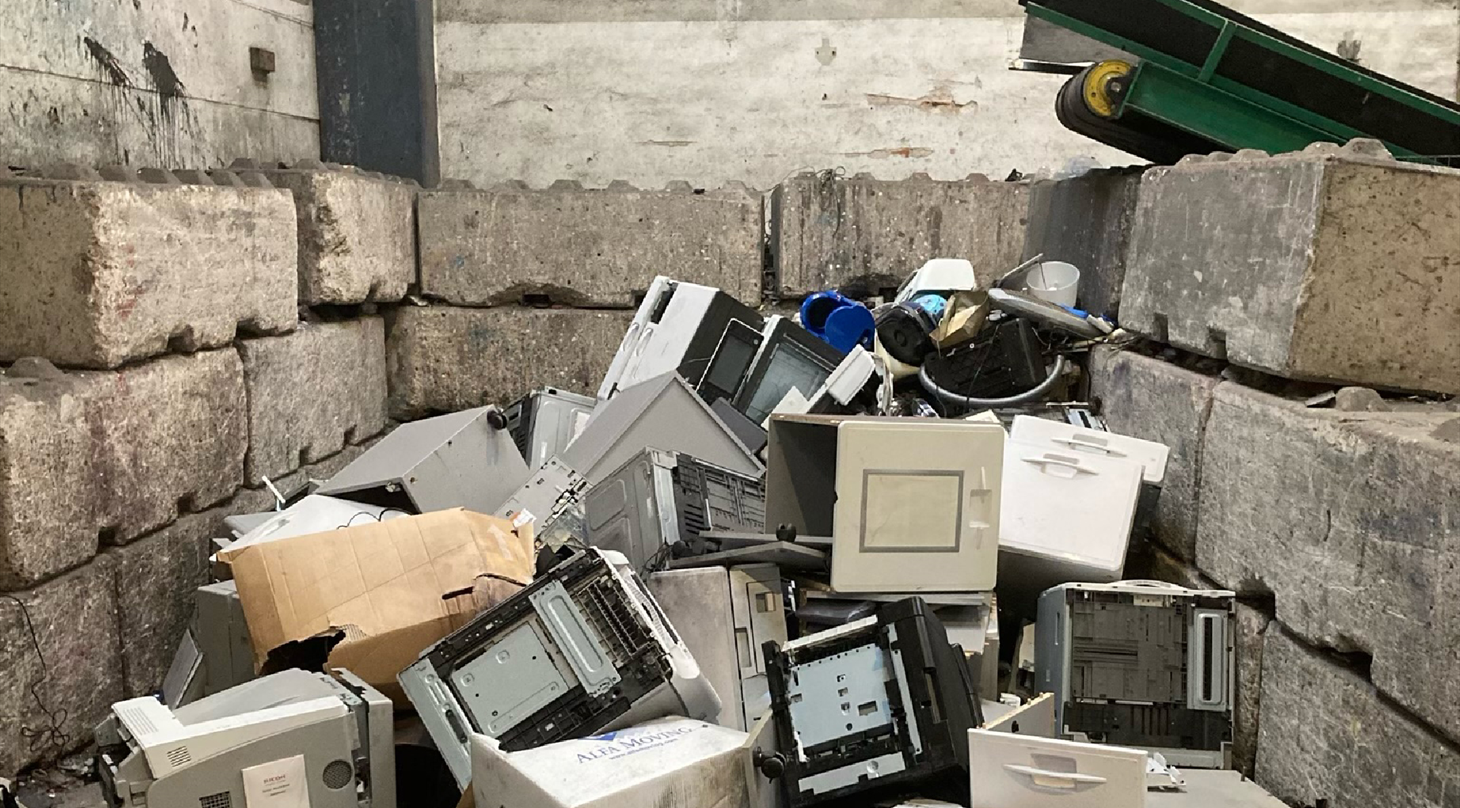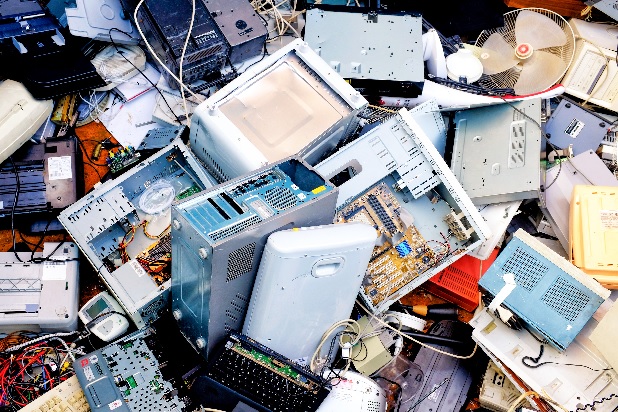
Improved recycling of used electronics and e-waste
Danish companies are taking the lead in a collaboration on e-waste management, which in Denmark alone amounts to 17.7 kg per Dane annually.
The main players in the electronics industry are cooperating to increase the degree of reuse and recycling of electronic products and sub-components to create a more sustainable electronics industry in a new project called CirkEL.
Worldwide, e-waste is one of the fastest growing waste streams and comprises everything from microwaves, fridges, electric toothbrushes, smartphones, lamps to computers. In average, every single citizen on earth produces 7.3 kg of e-waste annually. In Denmark, we are among the largest consumers with an annual consumption of 17.7 kg per Dane.
- Electronics are increasingly becoming an integrated part of our society and our everyday lives. The products typically consist of numerous components containing plastics, metals, glass, and rare earths, but they are hardly ever designed for easy repair, component reuse or recycling. As a result, many products are discarded although they could be repaired, or some components could be reused. At the same time, valuable critical resources such as rare earths are lost during the processing of non-repairable electronics. The main project players want to create a technological platform to facilitate increased reuse, recycling or recovery of valuable materials, says Aisha Rafique, Project Manager, Danish Technological Institute, who is heading the CirkEL project.
The main project players will develop technologies and methods within five areas: pre-sorting and assessment of used electronics, separation of sub-components, reuse, recycling, and circular design. The new technologies will be combined in a technology platform that ensures optimal utilization of electronics and critical resources. The technologies will be developed in close cooperation with electronic manufacturers and technology companies, so the technologies can be adapted to existing designs and vice versa.
Nine main players have joined forces
The project is supported by the Danish Environmental Protection Agency, and nine companies have joined forces aiming for closed cycle e-waste management. The companies represent several links in the electronics supply chain such as electronics manufacturers (Schneider Electric Denmark, Bang & Olufsen, KK Wind Solutions, and Nilfisk), a waste management and processing company (Ragn-Sells Denmark), refurbishment, reuse, and recycling companies (Techsave, Trebo, and Eldan Recycling) and a logistics partner called European Recycling Platform Denmark.
- The main barrier to increasing the recycling rate of electronics is their complex design, and the fact that refurbishment or recycling of raw materials often are not cost-effective solutions compared to buying new e-products. Therefore, we will focus on developing automated dismantling processes and recycling technologies so fewer valuable components and materials are lost - with a profitability that strengthens the incentive to invest in reuse and recycling, says Christian Lundgaard, CSO at Trebo A/S.
Reuse, recycling, and recovery
The platform will also ensure proper treatment of electronic products by using the most suitable technologies so the entire product and functional sub-components can be refurbished and reused, whereas regular e-waste is separated so valuable raw materials can be removed and reused.
- An important prerequisite for increased reuse and recycling is a good infrastructure. At Ragn-Sells Denmark, we are pleased to join forces with a broad field of players so we can share knowledge and ensure consistent solutions. With this platform we would like to create a new cycle for e-waste, and we hope it can be implemented in many countries beyond Denmark. Such a platform is crucial, says Massimo Forti, CEO from Ragn-Sells Denmark.
A holistic concept
Several of the participating companies already have solutions that address some of the current challenges. For instance, Techsave A/S can remove corrosion in devices by combining cleaning and drying in a patented process that makes it possible to refurbish products damaged by liquid, rust, salt, or sugar. Eldan A/S develops customized recycling machinery for mechanical reprocessing of e-waste to liberate ferrous and non-ferrous metals and separate them from organic materials such as plastics and rubber.
- The strength of the CirkEL project is that we take a holistic look at the available methods and technologies and work towards a concept that can handle e-waste regardless of its condition. This will ensure that viable products can be returned to the market, and we can optimize the use of the resources hidden in products that no longer work. This will encourage the move from a linear to a circular electronics industry," says Aisha Rafique, Danish Technological Institute.
The CirkEL project (2023-2025) is supported by MUDP under the Danish Environmental Protection Agency (EPA) and is a collaboration between Ragn-Sells Danmark A/S, Trebo ApS, Eldan Recycling A/S, Techsave A/S, European Recycling Platform Denmark ApS, Schneider Electric Danmark A/S, Bang & Olufsen A/S, KK Wind Solutions A/S, Nilfisk A/S, and Danish Technological Institute.

Facts about e-waste
The United Nations estimates that only 17% of all e-waste worldwide is managed and processed in an environmentally sustainable manner. This means that large amounts of critical resources such as gold, platinum, and tantalum are lost. If the current linear production and consumption patterns continue at the current speed, the amount of WEEE (Waste from Electrical and Electronic Equipment) will double by 2050 compared to today as over 50 million tons of WEEE is generated annually. Electronic products have a complicated structure, and up to 69 different elements have been identified in e-waste, including precious metals such as gold, silver, copper, platinum, ruthenium, and rhodium and so-called critical raw materials that are of strategic importance and may become difficult to procure. They, e.g., comprise cobalt, palladium, indium, germanium, and bismuth.
For more information, please contact
- Aisha Rafique, Project Manager (PhD), Danish Technological Institute, email: araf@teknologisk.dk,
mobile: +45 7220 2336